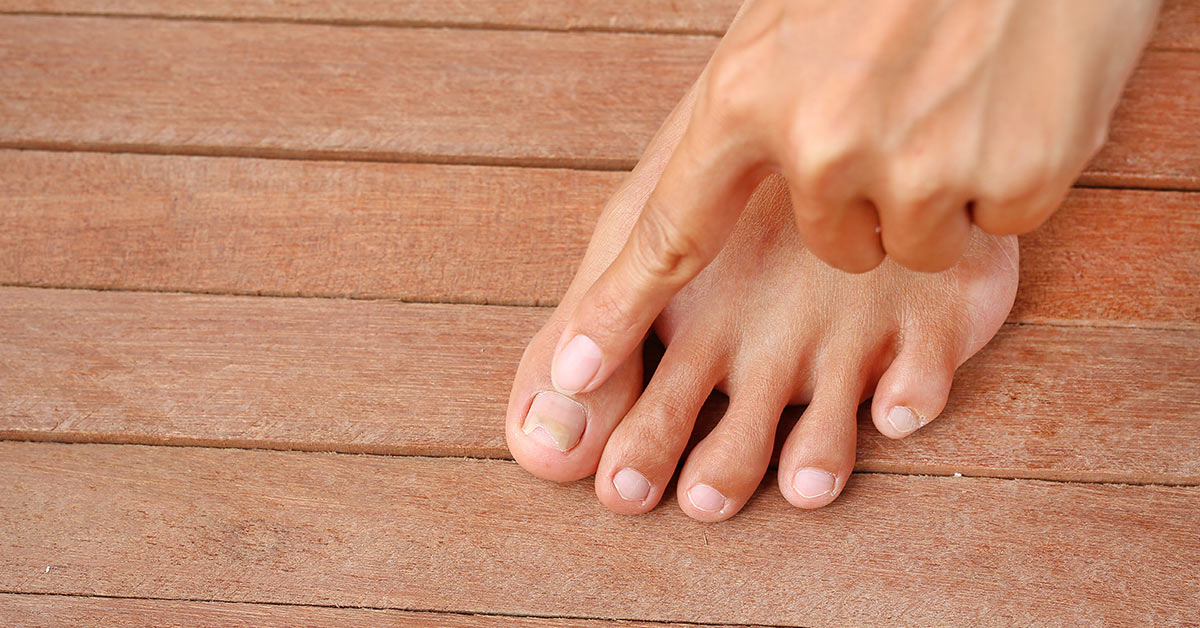Toenail fungus is no fun. It looks gross, feels gross, and is uncomfortable. It will also make you feel self-conscious wearing sandals or going swimming, not to mention as with any infection, can become dangerous if left unattended. What exactly causes nail fungus and how can you get rid of it? This is everything you need to know.
What Is Nail Fungus?
First of all, I’ll start by saying that this condition is much more common than you think. If you have it, you are most definitely not alone. Nail fungus usually starts as a white or yellow spot under the tip of the nail. It is more commonly seen in toenails but can occur in fingernails as well. As the infection makes it’s way deeper into your nail, it will cause your nail to thicken, discolor, and become crumbly at the edge. (1)
Nail fungus is also called onychomycosis. It is different from athlete’s foot because it only affects the nail, whereas athlete’s foot is when the infection is in areas between your toes and the skin of your feet. It can be mild and untroublesome and can even go away on its own. If it is painful and has caused your nails to thicken, then you will need to take the proper steps to help it along. Unfortunately, it is often an infection that comes back. (2)
What Causes Nail Fungus?
Fungal nail infections are caused by, unsurprisingly, fungus, however, yeasts and molds can also cause them. It is more common in older adults than younger people because as we age, our nails become brittle and dry. This often leads to cracks, which makes us more vulnerable to infection. You can pick up fungus from many places: Floors, nail clippers, even just having feet in shoes all the time can put you at risk. Factors that put you at risk include:
- Being older, owing to reduced blood flow, more years of exposure to fungi and slower growing nails
- Sweating heavily
- Having a history of athlete’s foot
- Walking barefoot in damp communal areas, such as swimming pools, gyms and shower rooms
- Having a minor skin or nail injury or a skin condition, such as psoriasis
- Having diabetes, circulation problems or a weakened immune system
Symptoms of Nail Fungus
There are a number of symptoms of nail fungus. If you are unsure, check the list below.
- Thickened
- Whitish to yellow-brown discoloration
- Brittle, crumbly or ragged
- Distorted in shape
- A dark color, caused by debris building up under your nail
- Smelling slightly bad
If you have any of these symptoms, first start with self-care. If the problem continues, gets worse, or is painful, go see your doctor.
What To Do If You Have An Infection
As always, prevention is better than necessary intervention. Things like washing your hands and feet often, disinfecting nail clippers and cutting them properly, and wearing sweat-absorbing socks will help. Wearing clean socks and letting your feet breathe also helps to prevent infection. Always wear shoes or sandals in settings such as public pools or change rooms, and you also may want to give up your acrylic nail habit.
If you have an infected nail, trimming and thinning that nail will help. You can also purchase over-the-counter antifungal nail creams and ointments. If these don’t work, your doctor may prescribe you:
- Oral antifungal medications
- Medicated nail polish
- Medicated nail cream
In some instances, surgical removal of the nail may be necessary. The most important aspect is if you have a nail infection, don’t wait to do something about it until it’s really bad. Take care of it quickly so you don’t have to resort to more drastic measures.
Sources
- “Nail fungus.” Mayo Clinic.
- “Onychomycosis.” Probity Medical

